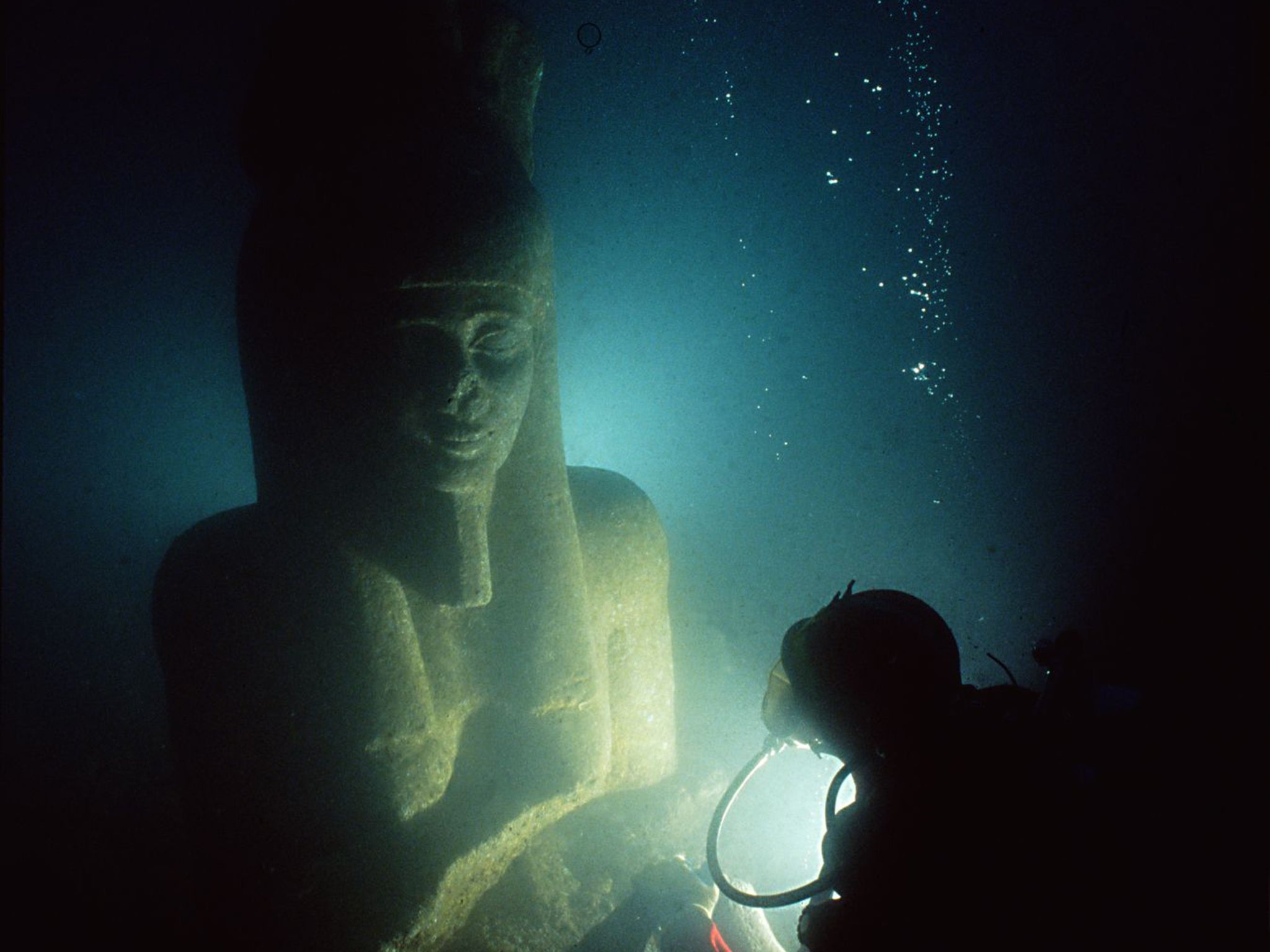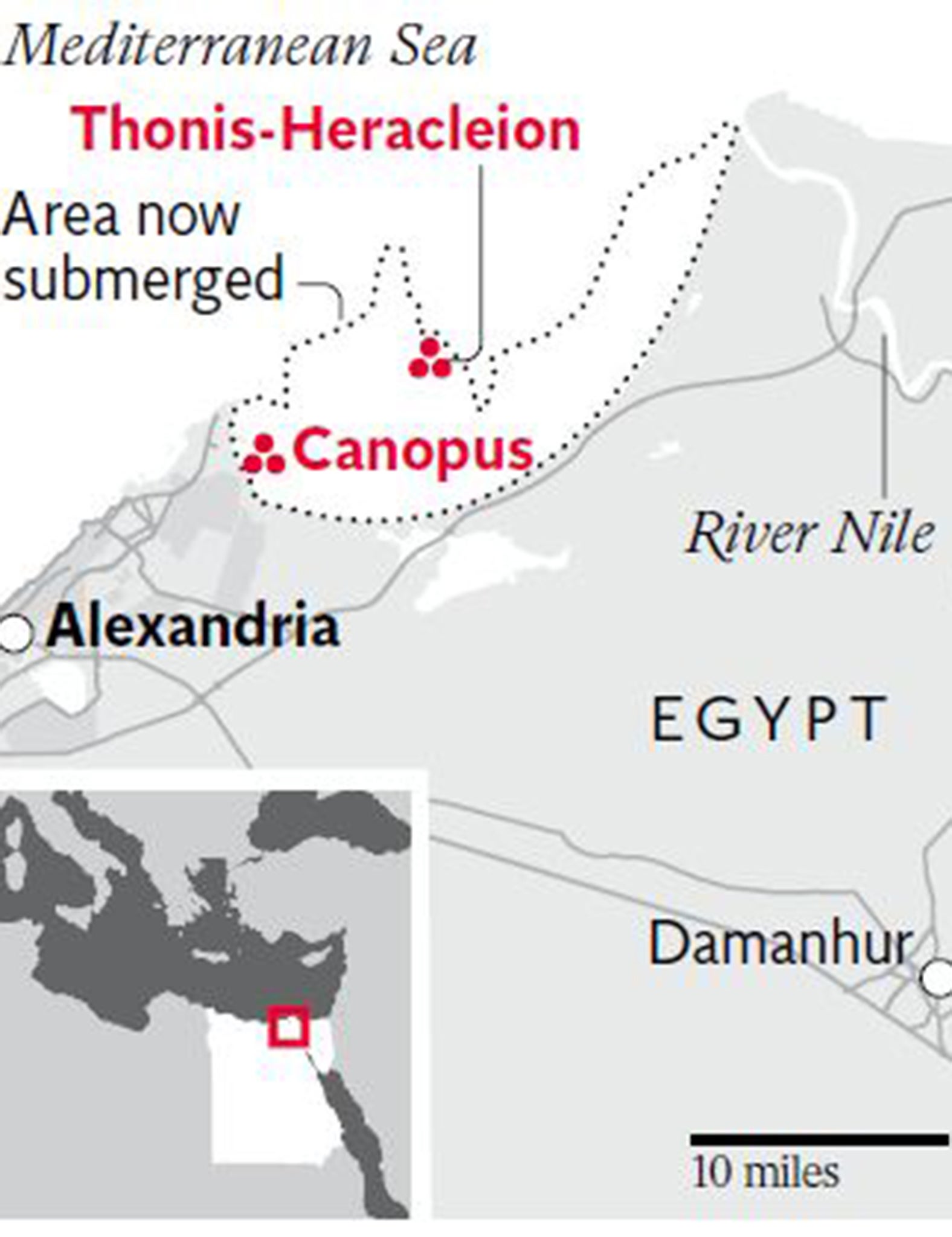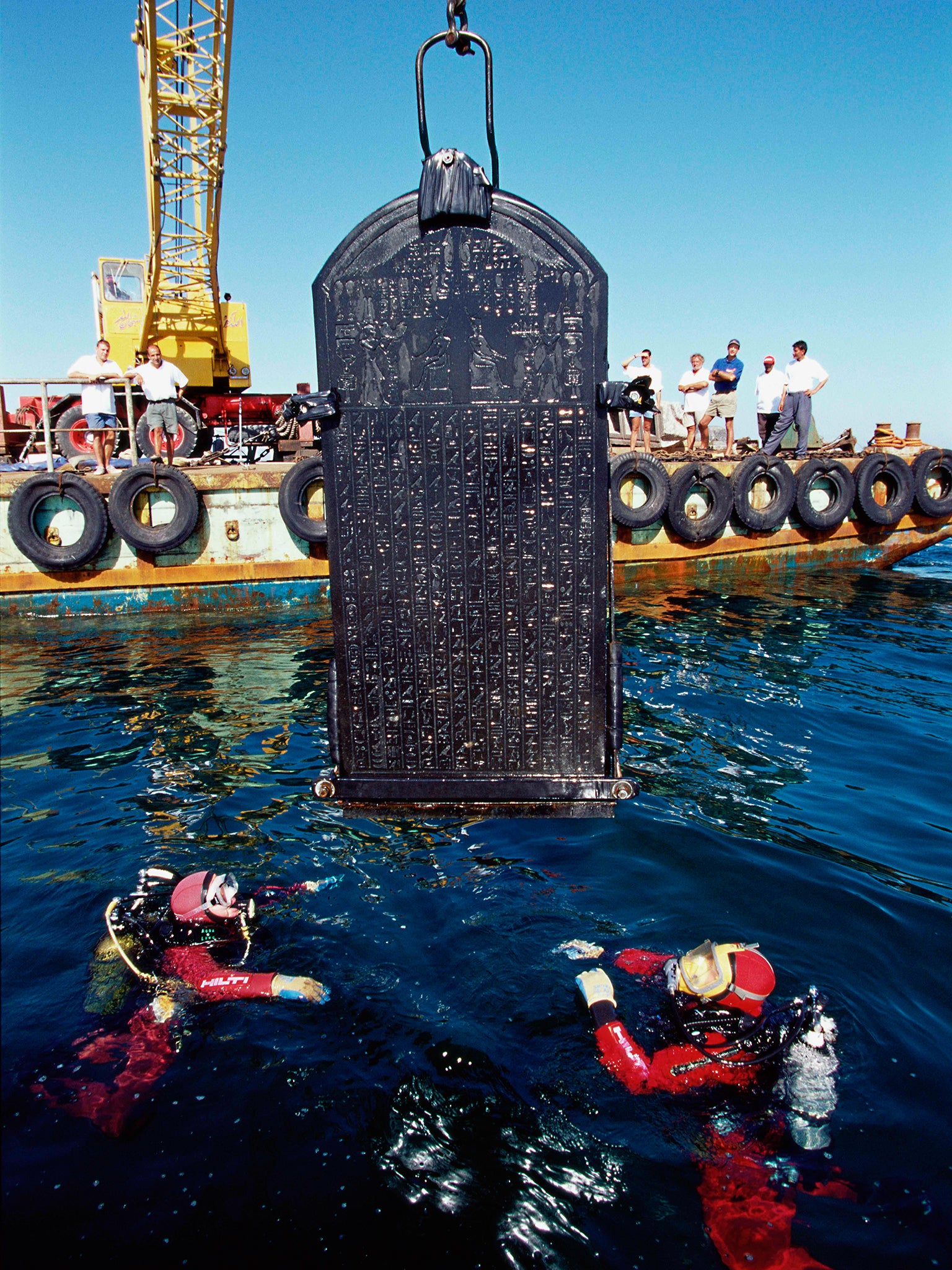British Museum: 'Underwater Pompeii' comes to London as Egypt’s sunken cities are rediscovered
Relics of two ancient ports excavated from the deep will be on display at the British Museum next year

At a certain point in the 8th Century, a cataclysm turned the ancient Egyptian cities of Thonis-Heracleion and Canopus into legends. While tales abounded of their magnificence, no physical trace could be found on the Nile delta of these once thriving gateways to the land of the pharaohs.
The most widely-held theory as to what caused the two ports to be swallowed by the Mediterranean is that a violent earthquake caused the clay upon which they were built to suddenly liquefy. Within a matter of moments, two wonders of the ancient world sank into a muddy tomb beneath an advancing sea.
It was to be another 1,200 years before the cities, both visited before their demise by the Greek historian Herodotus, were able to return from the realm of myth. In 2000, a European team located the remains of the temple that once stood at the heart of Thonis-Heracleion and realised it had stumbled upon nothing short of an “underwater Pompei”.
Now the extraordinary story of the disappearance and resurrection of the two cities is to be told in a blockbuster exhibition at the British Museum opening next May that will bring to London for the first time more than 200 objects painstakingly excavated from the sea off Egyptian coast.

Such was the suddenness of the destruction of Thonis-Heracleion and Canopus, burying their monumental stone buildings in a layer of sediment up to three metres thick, that the objects which once stood in its public and private spaces have emerged from the waves in pristine condition.
Among the items being loaned by the Egyptian authorities - the first such move since the Arab Spring - is a five-metre granite statue of the god Hapy, perhaps appropriately the divine personification of the flooding of the Nile.
Franck Goddio, the French archaeologist who first found the sites in 1996 and has been excavating them ever since, told The Independent: “The catastrophe that struck was sudden - we have found human remains under tumbled blocks of stone. The result is that we have something that is very untouched, a sort of underwater Pompei.
“But this site is about four times larger than Pompei and we have barely started our work - so far we have excavated less than two per cent of the site. And it is very rich in artefacts - we can find up to 450 ancient objects in a single square metre. There is perhaps centuries of work before we have examined everything.”
The exhibition, entitled Sunken Cities: Egypt’s Lost Worlds, is the first by the British Museum to focus on underwater archaeology and will run for six months in anticipation of high visitor numbers. Curators said it will highlight the way in which the ports acted as trading posts with ancient Greece and the resulting close relationship which saw Greek residents of the Egyptian ports adopt some of the deities of their hosts.
Among the items being shown is a stele or standing stone dating from around 378BC and inscribed with hieroglyphics which also made it clear that the pharaohs still called the shots. The carving stipulates that a 10 per cent tax was to be raised on all imports from Europe, including items of gold, silver and precious wood.
The notion of an intertwined relationship between civilisations on both sides of the Mediterranean was not lost on the Egyptian government, which is hoping the exhibition will remind a British audience of the riches of its ancient civilisation and help rekindle a tourism industry damaged by ISIL attacks both at home and abroad.
Nasser Kamel, Cairo’s ambassador to London, told a launch event at the museum: “Our sea was a melting pot of the ancient world. Tolerance is what we need and this exhibition has an important role to play in meeting that goal.”
Mr Kamel was speaking just a few metres from the Rosetta Stone, the famous crib sheet for decoding hieroglyphics which has previously been the subject of calls for it to be returned to Egypt. There was no mention of any such restitution demands, though a request from Cairo for the stone to be loaned to mark the opening of a new museum in Alexandria remains on hold while the building is completed for 2020.
The quantity of finds from the excavations at Thonis-Heracleion and Canopus, which once sat on adjoining islands in the mouth of the Nile, means that more delicate objects from daily life will feature in the London exhibition alongside the monumental statuary raised from the seabed.
The diving teams led by Mr Goddio, a former United Nations economist who gave up the role to pursue his passion for underwater archaeology, have to sift through sediment layers from 50cm to 3.5m in depth to reach the artefacts.
The results include a garden vat and a large numbers of lead models of papyrus barges that were thrown into the waters around Thonis-Heracleion as votive objects for the god of death, Osiris. Among other finds is a headless sculpture of a Arsinoe II, a member of the Greek dynasty that eventually took over Egypt, carved in a diaphanous shift.
Aurelia Masson-Berghoff, the curator of the exhibition, said: “People sometimes assume that when two cultures mix, the essence of each is diluted and, as a result, weakened; this exhibition demonstrates the opposite.”
Four of Egypt’s sunken treasures
Arisonoe II
A headless sculpture of a queen of the Ptolemaic dynasty that came to rule Egypt found in Canopus. It is a breathtaking combination of the classic Greek and Egyptian styles of carving.

Hapy
Found in Thonis-Heracleion, this vast 5.4m statue dates from the 4th Century BC - some 300 years after the port was founded. It represents the Egyptian god associated with the flooding of the Nile.
Votive barges
Dozens of small lead models of papyrus barges have been found in the canals and basins of the two ports. They were thrown into the water as dedications during the festival of the god Osiris.
Stele of Nectanebos I
This 1.9m stele or standing stone lays out the decree of the pharaohs that imports into Egypt from Greece were subject to a 10 per cent tax. The stone makes clear that it is to be placed in Thonis-Heracleion.
Join our commenting forum
Join thought-provoking conversations, follow other Independent readers and see their replies
Comments